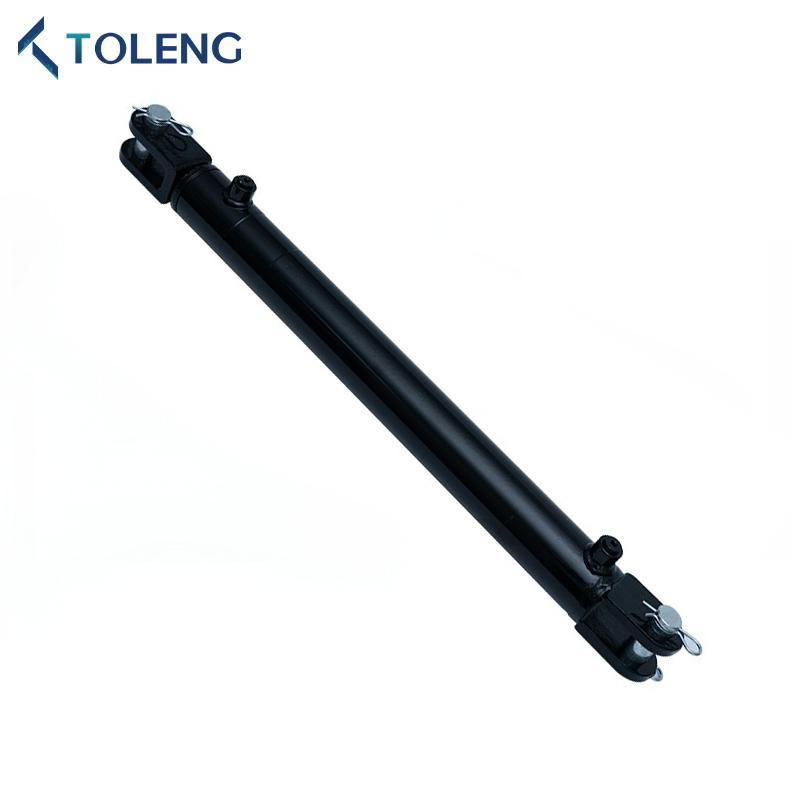How Does a Single-Acting Hydraulic Cylinder Differ from a Double-Acting One?
2025-01-21
Hydraulic cylinders are essential components in countless applications, from industrial machinery to construction equipment. They come in two main types: single-acting and double-acting hydraulic cylinders. Understanding the differences between these two designs is key to choosing the right one for your specific needs. Below, we delve into their functionality, design, and applications to highlight their distinctions.

What is a Single-Acting Hydraulic Cylinder?
A single-acting hydraulic cylinder relies on hydraulic fluid pressure to perform work in one direction, typically extending the piston rod. The retraction of the piston rod is achieved through an external force such as gravity, a spring, or the load itself. Here are its key characteristics:
- Single Fluid Port: It has one port for hydraulic fluid to enter and create pressure.
- Simple Design: The construction is straightforward, resulting in lower manufacturing costs.
- External Retraction Force: Retraction is not powered by hydraulics but by an external force or a built-in spring mechanism.
- Limited Applications: Ideal for operations requiring movement in one direction, such as lifting or pushing.
Common Applications of Single-Acting Cylinders:
- Dump Trucks: Used to lift the bed for unloading materials.
- Hydraulic Jacks: Extend the lifting arm to raise loads.
- Press Machines: Provide downward force for stamping or forming.
What is a Double-Acting Hydraulic Cylinder?
A double-acting hydraulic cylinder uses hydraulic fluid pressure to power both extension and retraction of the piston rod. This makes it more versatile and capable of handling a wider range of tasks. Key characteristics include:
- Two Fluid Ports: One port is for fluid to extend the piston rod, and the other is for retraction.
- Bidirectional Power: Hydraulic pressure controls both the extension and retraction.
- Complex Design: Slightly more intricate than single-acting cylinders, leading to higher costs but greater functionality.
- Enhanced Precision: Allows for precise control over the movement in both directions.
Common Applications of Double-Acting Cylinders:
- Excavators: Operate the arm and bucket for digging and lifting.
- Industrial Robotics: Enable precise bidirectional motion.
- Material Handling Equipment: Provide both lifting and lowering functions in forklifts and cranes.
Key Differences Between Single-Acting and Double-Acting Hydraulic Cylinders
- Fluid Ports: Single-acting cylinders have one port, while double-acting cylinders have two.
- Movement Direction: Single-acting cylinders are powered in one direction, whereas double-acting cylinders are powered in both directions.
- Retraction Method: Single-acting cylinders rely on an external force or spring for retraction, while double-acting cylinders use hydraulic pressure.
- Complexity: Single-acting cylinders have a simpler design compared to the more complex double-acting cylinders.
- Cost: Single-acting cylinders are generally more cost-effective, while double-acting cylinders offer greater functionality.
- Applications: Single-acting cylinders are best for one-direction tasks, while double-acting cylinders suit versatile tasks requiring bidirectional movement.
Choosing the Right Cylinder for Your Application
The choice between a single-acting and a double-acting hydraulic cylinder depends on the specific requirements of your application:
- Use a Single-Acting Cylinder if:
- Your task only requires motion in one direction.
- You need a cost-effective and straightforward solution.
- An external force can facilitate the return motion.
- Use a Double-Acting Cylinder if:
- Your application demands precise control in both directions.
- You need faster and more reliable retraction.
- Versatility and power are key priorities.
TOLENG is a professional China Standard Hydraulic Cylinder manufacturer and suppliers. Since 1998, we have specialized in manufacturing hydraulic cylinders in agriculture industry, construction industry, sanitation industry, and so on. TOLENG offers a complete line of different types of products, even customizable hydraulic cylinders.Visit our website at www.biggud.com to learn more about our products. For inquiries, you can reach us at sales01@phtl.cn.

























